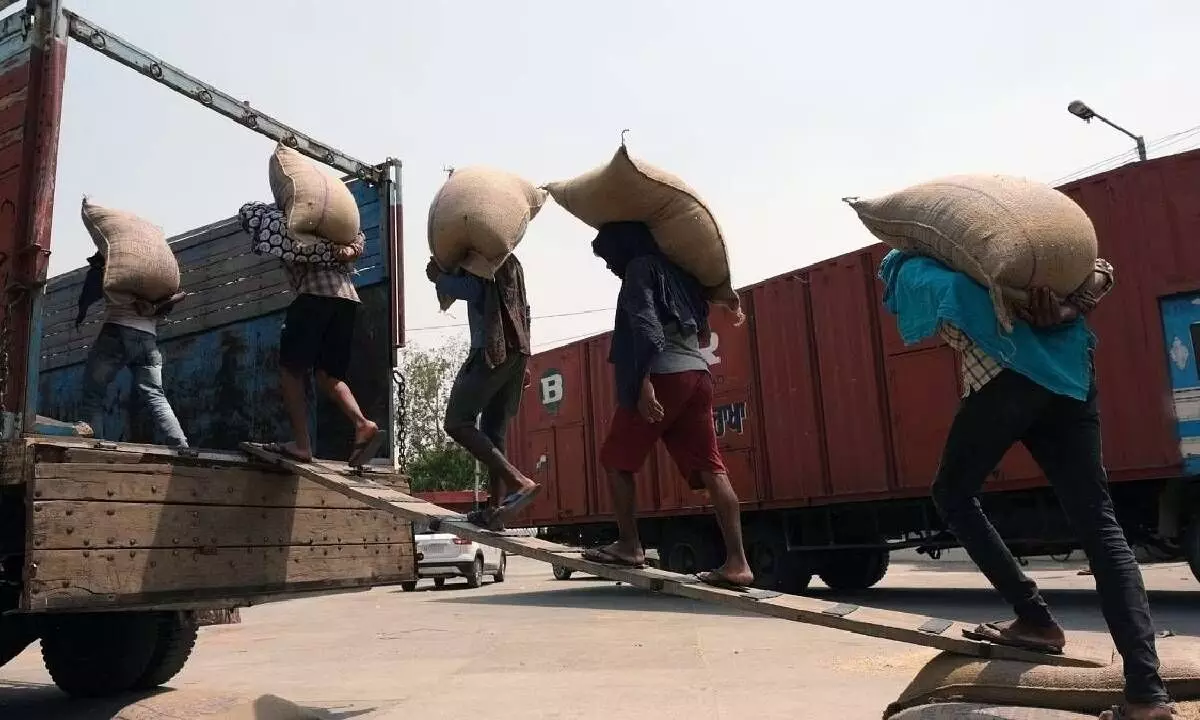High prices and ban on exports burning pockets of common man and farmers
Erratic climate conditions have shot up food prices in a global agri-trade major like India
image for illustrative purpose

Food, fuel, soaps and oils are some of the products that have become costlier in recent months. Blame it on inflation. The rising cost of living in India due to inflation has most folks understandably concerned about their personal finances.
In simple terms, inflation is the rise in the prices of goods and services over time. It increases the cost of living and decreases the average purchasing power of a person. Inflation is typically measured using the Consumer Price Index (CPI), which calculates the average change in the prices of goods and services over a given time period.
Erratic climate conditions, including the driest August in more than a century, have sent food prices spiralling above 11% in India, which is a major player in global agri-trade.
Just as tomato prices begin cooling down, onions have become dearer by a quarter since June. And pulses, which go into making the humble dal (lentil soup), are now around 20% more expensive than at the beginning of the year.
Inflation directly affects your household budget because it causes an increase in the cost of living. Consequently, your monthly expenses will shoot up even if you do not increase the quantity of goods purchased or the range of services availed.
For instance, if you spent Rs. 5,000 on groceries on average earlier, you may have to set aside a large sum on account of inflation, say around Rs. 7,000, for the same set of expenses soon.
The recent government data showed that the country's consumer price index (CPI) inflation surged sharply to a 15-month high peak of 7.44 per cent in July, driven by high food and vegetable prices.
Rice is part of the staple diet accounting for a large share of the caloric consumption of millions across Asia and Africa. And India is a major supplier to these markets.
Approximately, 42 countries in Asia and Sub-Saharan Africa get 50% of their total imports from India, going up to 80% in some countries, according to IFPRI, and its share cannot be "easily substituted with imports from other large exporting countries such as Vietnam, Thailand or Pakistan".
But the increase in global food prices cannot be blamed singularly on India's actions. The termination of the Black Sea Grain Initiative after Russia's invasion of Ukraine and extreme climate conditions across the world are other major contributing factors. July CPI print has breached the Reserve Bank of India's upper tolerance limit of six per cent for the first time in five months. The consumer food price index (CFPI) in July also surged to 11.51 per cent - the highest level since October 2020, as per the latest data from the Ministry of Statistics and Programme Implementaion. With some key state elections are due this year and a big general election looming next summer, the Union Government has swung into action, unleashing a number of measures to tame food inflation.
Following a ban on wheat exports in May 2022, India announced an abrupt stop to non-basmati white rice exports last month. More recently, the finance ministry imposed a duty of 40% on onions to discourage exports and improve domestic supplies.
The World Bank expects its food price index to average lower in 2023 compared with 2022, driven by lower oil and grain prices. But analysts say the future price trajectory will depend on the impact of El Niño weather phenomena - something that could have far-reaching implications and put further pressure on food markets.
Amid the uncertainty, calls for India to reverse its ban on the export of key commodities have come from various quarters, including the International Monetary Fund (IMF). Besides contributing to global food inflation, "export bans have other negative externalities, such as denting India's reputation as a dependable supplier and preventing farmers from benefiting from remunerative prices globally", say analysts at Nomura.
But according to the FAO, the most significant threat comes from the likelihood of more countries resorting to export restrictions, which would "undermine trust in the global trading system".
However, some say realpolitik and a resolve to increase food self-sufficiency will outweigh these other considerations in India, especially during a politically sensitive period.
In the past, high prices of crops such as onions have led to electoral defeats in India; add to that an already wobbly consumption recovery.
Higher cost of food, which makes for a big chunk of an average Indian's expenses, can eat into discretionary incomes ahead of the upcoming festive season, and derail this recovery further.

